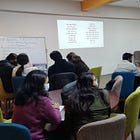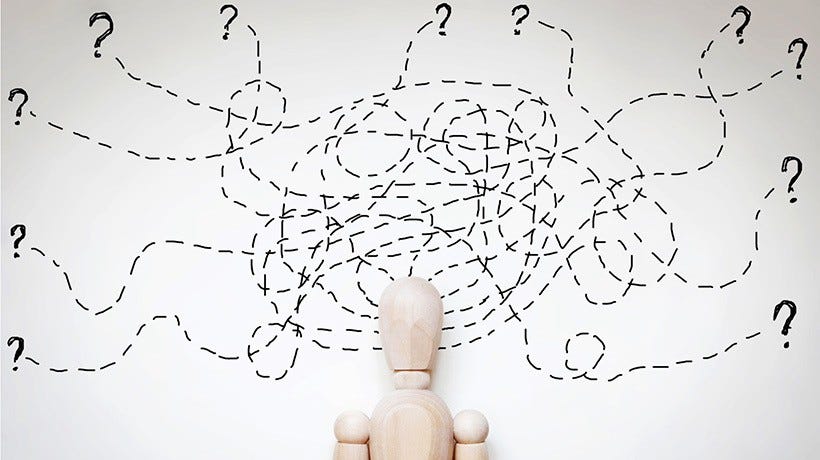Read Part 1 first for the whole context:
The Case AGAINST Lecture:
So, lecture method seems like a terrible way of teaching. I don’t think this statement will have any ounce of controversy in it.
In this post, let me share six reasons why lecture method has gained such a bad reputation and why most teachers in schools or universities are to be blamed for this.
1. Most teachers are Subject Matter Experts:
But they are not necessarily pedagogy experts.
There’s a general belief in school and colleges that anyone with a subject knowledge can be a teacher.
My own journey in teaching started with this misbelief. I had a good depth in English language and grammar, and thus I was allowed to start teaching English in a school.
So anyone with a degree in Science will be hired as Science teacher, and so on.
This is even more evident in higher secondary, bachelors and masters level. Most of the teachers are part-timers with industry related expertise and experience. But rarely do they have any pedagogical trainings.
As a result, without the pedagogical skills, they will rely heavily on lecture method to teach their content. Or to be specific, to ‘cover’ the content.
Unless the teachers have graduated out of a School of Education department, chances are their teaching approach will be heavily lecture based. (Even graduating out of SoE does not really ensure that they will have better pedagogical skills.)
This leads to the second point.
2. Lecture method doesn’t guarantee student engagement
When I talk about engagement, I am talking about whether the students are “thinking” or not1. It’s about being cognitively active. Not so much about being physically active.
For a teacher giving a lecture, he/she will see the students listening to the lecture and taking down the notes. And, that’s enough proof for the teachers to claim that the students are engaged and are learning.
Lectures typically involve a one-way flow of information from the teacher to the students, with limited opportunities for engagement (for thinking deeper and harder).
The teacher is more active, the students not quite so. And thus, most students will find this method boring, uninspiring, and demotivating.
Plus, there are two major reasons for the teachers to question the lecture method.
First, the attention span of the students.
We know that “attention is the gateway for learning”. What you attend to is what you (may) learn.2
But many research show that the average attention span of students is getting shorter and shorter. My rule of thumb is around 10 mins. Therefore the students may struggle to maintain focus during lengthy lectures. Resulting in decreased information retention and understanding.
Second, the easy distractions all around. The external environment, the cell phones, the social media notifications, the noisy classroom, the visual distractions on the walls, etc. And, the internal environment of the students. May be lack of sleep, zero motivation, biases against the subject/teacher, emotional baggage, lack of accountability, etc.
Knowing that the students have a short attention span and they are easily distracted, the teachers might still rely heavily on lecture method because that’s how they have been teaching.
For more on student engagement, click the link below:
3. Lecture is a “one size-fits all” method
Every student in the class comes with some sort of prior knowledge, relevant or irrelevant to the subject. However, they do not have the same quality of prior knowledge. They also bring in their own unique and flawed beliefs, experiences, and biases. Their prior knowledge is also inaccurate, superficial, and incomplete.
Meaning, students could have differing and contrasting level of prior knowledge.
But when a teacher is giving lecture, he/she will have to believe that every single student has the same prior knowledge and thus every single one of them are able to process the meaning, generate interpretations, and understand the concept in the exact way.
More often than not, students have disimilar levels of prior knowledge, and as a result, their understanding will not be in the similar level.
Sadly, the teacher will assume that every student will be able to get it. Sure, it’s easier to transfer the information from one to many students, but at what cost !
Remember, the Curse of Knowledge is a prominent trait of subject matter experts. I have written about it in details here:
4. Lecture creates Cognitive Overload
There’s a lot of invisible processes happening during a lecture, assuming that the students are willing to stay attentive and undistracted.
The teacher speaking at a certain speed. The students listening to the teacher’s words and processing the information at a certain speed. And taking down notes at a certain speed.
And, these processes get more complicated if there’s too much visual information or too little of it.
Listening, processing, writing, and understanding - this is a heavy cognitively demanding work. Too many processes competing for a limited amount of working memory.
Thus the teacher, knowingly or unknowingly, might impose extraneous and irrelevant cognitive load in the students by implementing lecture method. Adding more confusion rather than clarity.
5. Zero or Limited Interaction
Lecture method generally limits the opportunities for both levels of interaction in the classroom. The student-teacher and student-student interactions.
Interaction is a major part of the learning process, especially the social aspect of learning. Students usually need chances to share their ideas, their understandings, doubts, examples, questions among themselves and share the same to the teachers as well.
But when a teacher is giving a lecture, students may hesitate to ask questions or seek clarification. Due to time constraints or the fear of disrupting the flow. Sometimes, students also fear the teacher’s personality or the unwritten norm of not raising the hands, so they simply opt to listen and not interact.
(I remember one of my school teachers threatening me for asking a legit question. I never asked any question in his class since then.)
Imagine, what the students might be going through when there’s zero interaction among others and limited engagement in their minds ! No wonder, it is boring, uninspiring, and demotivating.
6. Lack of feedback and assessment
Lastly, lectures typically lack immediate feedback and checking for understanding. Most of the time, the teacher assumes that the students have understood the concept because no one asked any questions.
The teacher also assumes that the students will be able to retain the understanding because he/she was so clear while delivering the lecture.
These assumptions among many teachers restrict meaningful and deep learning in the classroom. The lack of willingness or awareness among teachers to check for understanding and provide feedback makes lecture method such a killer of learning.
Just imagine, this is all in an online class !!!
To sum up, the lecture method is a terrible method and teachers are to be blamed for it because:
a. they might be a subject expert but might not have any pedagogical skills
b. this method can not guarantee student engagement (thinking)
c. this is a one-size-fits-all approach but students have differing levels of prior knowledge
d. they squeeze in more information and ignore the limitations of working memory
e. they limit any form of interactions
f. the teacher does not provide feedback or check for understanding. Due to lack of time or awareness.
In the next part, I will share my arguments to support and defend the lecture method as a misunderstood yet highly useful tool.
From Rob Coe’s Poor Proxies of Learning. A better proxy is to ensure that students are thinking harder.
The source of this statement is either from Dan Willingham or Peps McCrea. And, cognitive scientists/psychologists do agree with this.









However, it is worth noting that the lecture method can still be effective in certain situations, such as when the teacher is an expert in the subject matter, the students have a high level of prior knowledge, or the lecture is supplemented with other teaching methods that promote active learning and interaction. Therefore, it may not be accurate to say that the lecture method is universally a terrible way of teaching. Let's see what your part 2 bring.